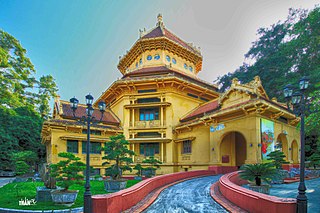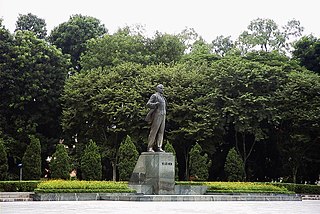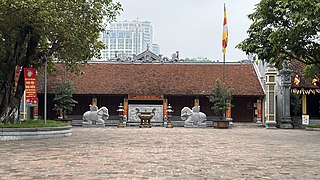36 Sights in Hanoi, Vietnam (with Map and Images)
Legend
Premium Sights
Book tickets, guided tours and activities in Hanoi.
Guided Free Walking Tours
Book free guided walking tours in Hanoi.
Welcome to your journey through the most beautiful sights in Hanoi, Vietnam! Whether you want to discover the city's historical treasures or experience its modern highlights, you'll find everything your heart desires here. Be inspired by our selection and plan your unforgettable adventure in Hanoi. Dive into the diversity of this fascinating city and discover everything it has to offer.
Sightseeing Tours in HanoiActivities in HanoiThe Vietnam Military History Museum, set up on 17 July 1956, is one of seven national museums in Vietnam. It covers 12,800 m2. It is situated in central Hanoi, opposite the Lenin Park and near the Ho Chi Minh Mausoleum. The Flag Tower of Hanoi is located inside of the museum grounds.
2. Imperial Citadel of Thang Long
The Imperial Citadel of Thăng Long is a complex of historic buildings associated with the history of Vietnam located in the centre of Hanoi, Vietnam. Its construction began in 1010 and was completed in early 1011 under the reign of Emperor Lý Thái Tổ of the Lý dynasty. Most of the existing structure is dated to the extensive reconstruction of the old Imperial Citadel ordered by Gia Long in 1805, but the Citadel was largely demolished by the French to allow more land for offices and barracks.
3. Quan Thanh Temple
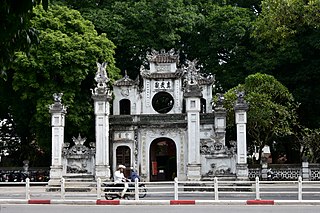
Quán Thánh Temple, also known as Trấn Vũ Temple, is a Taoist temple in Hanoi, Vietnam. Dated to the 11th century, the temple was dedicated to Xuan Wu, or Trấn Vũ in Vietnamese, one of the principal deities in Taoism. As one of the Four Sacred Temples of the capital, Quan Thánh Temple is located near West Lake in a ward of the same name: Quán Thánh Ward; and is one of the leading tourist attractions in Hanoi. The temple's name means Place of the Gods. The name of the long street running by the temple is also called 'Quán Thánh' street.
Ba Đình Square is the name of a square in Hanoi where president Ho Chi Minh read the Proclamation of Independence of the Democratic Republic of Vietnam on September 2, 1945. It is named after the Ba Đình Uprising, an anti-French rebellion that occurred in Vietnam in 1886–1887 as part of the Cần Vương movement. When Ho Chi Minh died, the granite Ho Chi Minh Mausoleum was built here to display his embalmed body. It remains a major site of tourism and pilgrimage.
Turtle Tower, also called Tortoise Tower, is a small tower in the middle of Hoan Kiem Lake in central Hanoi, Vietnam. It is one of the most iconic, symbolic and most recognizable pieces of architecture representing Hanoi and the entirety of Vietnam.
6. Presidential Palace
The Presidential Palace of Vietnam, located in the city of Hanoi, currently is the official residence of the president of Vietnam. Before 1954, it was named the Palace of the Governor-General of Indochina .
7. Hanoi Train Street
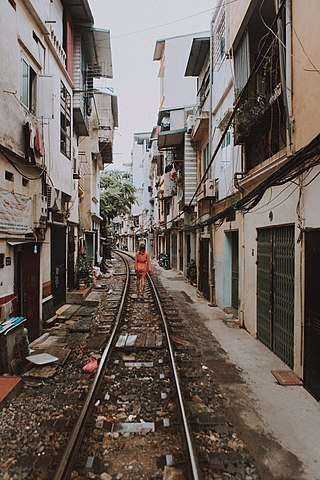
Hanoi Train Street is a narrow train bypass in Hanoi which sees a twice-daily train pass close to buildings on either side of the tracks. The track was built by the French in 1902 and is still an active rail line as of 2023.
8. Bach Ma Temple
Bach Ma Temple is one of the four towns of the ancient Thang Long citadel, consisting of four temples: Quan Thanh Temple; Kim Lien Temple; Elephant Phuc Temple; Bach Ma Temple, located at 76 Hang Buom Street, Hang Buom Ward, Hoan Kiem District, Hanoi.
9. Opera House
The Hanoi Opera House, or the Grand Opera House is an opera house in central Hanoi, Vietnam. It was erected by the French colonial administration between 1901 and 1911. Hanoi Opera House is one of three opera houses that the French built during their time in Indochina, the others are Haiphong Opera House and Municipal Theatre in Ho Chi Minh city.
10. One Pillar Pagoda
The One Pillar Pagoda, formally belongs to an architecture complex called Diên Hựu tự which means 'pagoda of extended blessings'. The pagoda is a historic Buddhist temple in the central Ba Đình district, Hanoi, the capital of Vietnam. The most famous part of this architecture complex is Liên Hoa Đài (蓮花臺) means 'the lotus pedestal' which is a temple with special structure: a building laid on one pillar. The original pagoda was built in 1049, had some additions and was perfected in 1105. It is regarded alongside the Hương Temple, as one of Vietnam's two most iconic temples.
11. Ho Chi Minh Mausoleum
The President Ho Chi Minh Mausoleum is a mausoleum which serves as the resting place of Vietnamese revolutionary leader and President Ho Chi Minh in Hanoi, Vietnam. It is a large building located in the center of Ba Đình Square, where Ho, Chairman of the Workers' Party of Vietnam lived from 1951 until his death in 1969, read the Declaration of Independence on 2 September 1945, establishing the Democratic Republic of Vietnam. It is open to the public every morning except Monday and Friday.
12. Hoa Lo Prison (Hanoi Hilton)
Hỏa Lò Prison was a prison in Hanoi originally used by the French colonists in Indochina for political prisoners, and later by North Vietnam for U.S. prisoners of war during the Vietnam War. During this later period, it was known to American POWs as the "Hanoi Hilton". Following Operation Homecoming, the prison was used to incarcerate Vietnamese dissidents and other political prisoners, including the poet Nguyễn Chí Thiện. The prison was demolished during the 1990s, although its gatehouse remains a museum.
13. Hanoi Post Office
Hanoi Post Office is a project located opposite Hoan Kiem Lake, Hanoi, consisting of three post office buildings located at Dinh Tien Hoang, Le Thach and Dinh Le streets, built in neoclassical and Art Deco architectural styles.
14. Son Tay Ancient Citadel
Son Tay Ancient Citadel was built in the 3rd year of Minh Mang (1822) in the old province of Son Tay, is an ancient citadel built of bee stone of Vietnam with a total area of 16 hectares with unique architectures such as: bee stone walls, 4 city gates built of ancient bricks. This is one of the few citadels under the Minh Mang dynasty left to this day, the citadel was built solidly to protect the land northwest of Thang Long.
15. Thien Tru Pagoda

The Hương Temple is a vast complex of Buddhist temples and shrines built into the limestone Hương Tích mountains. It is the site of a religious festival which draws large numbers of pilgrims from across Vietnam. The centre of the Hương Temple lies in Hương Sơn Commune, Mỹ Đức District, former Hà Tây Province. The centre of this complex is the Hương Temple, also known as Chùa Trong, located in Hương Tích Cave.
16. Saint Joseph Cathedral
St. Joseph's Cathedral is a Catholic church on Nhà Chung Street, in the Hoàn Kiếm District of Hanoi, Vietnam. It is a late 19th-century Gothic Revival church that serves as the cathedral of the Roman Catholic Archdiocese of Hanoi. The cathedral is named after Joseph, the patron saint of Vietnam.
17. Vietnamese Women's Museum
The Vietnamese Women's Museum, established and operated by the Vietnam Women’s Union, officially opened its doors to public in 1995. The four-storey building is in Hanoi, Ly Thuong Kiet Street, situated along the central Hoan Kiem Lake and old quarter.
18. Thong Nhat Park
Thong Nhat Park is one of the major parks in Hanoi, Vietnam. In the park, there is Bay Mau Lake. It is adjacent to 4 streets: Tran Nhan Tong, Nguyen Dinh Chieu, Le Duan and Dai Co Viet streets, in Hai Ba Trung district, Hanoi city. As one of the major parks of Hanoi, there is Bay Mau Lake located in the center, although adjacent to 4 streets, the park is very quiet and airy, always an ideal choice for relaxation, entertainment, group activities, or studying. There are 2 entrances, one is on Le Duan Street, Hai Ba Trung, the other is located on Dai Co Viet Street, close to the University of Science and Technology and the Central Circus, which can be easily moved here by any means: Motorbike, bus or car. If traveling by motorbike, there is a parking space outside the park gate with a ticket price of 5,000 VND/day. Or it is possible to travel by bus with routes passing through the park as 03A, 08B, 09B, 30, 32, 35A, 41, 44 and 51.
19. Vietnam Museum of Ethnology
The Vietnam Museum of Ethnology is a museum in Hanoi, Vietnam, which focuses on the 54 officially recognised ethnic groups in Vietnam. It is located on a 43,799-square-metre (10.823-acre) property in the Cầu Giấy District, about 8 km from the city center. The museum is a member of the Vietnam Academy of Social Sciences - an academic institution of the Vietnamese Government.
Wikipedia: Vietnam Museum of Ethnology (EN), Website, Facebook
20. Dien Hong Park
Dien Hong Flower Garden, is a flower garden located in Hoan Kiem district, Hanoi city. At the beginning of construction, the Red Flower Garden was named Chavassieux Flower Garden. This is a work built by the French to commemorate Léon Jean Laurent Chavassieux, a deputy Governor General of Indochina.
21. Voi Phuc Temple
Voi Phuc Temple is a temple in Thang Long, the four towns of the ancient Thang Long Citadel, consisting of four Bao Lan shrines. The temple is located at 362 Kim Ma Street, Ngoc Khanh Ward, Ba Dinh District, Hanoi City, next to Thu Le Park, near Doi Le Duan School and opposite the University of Transport and Communications.
22. Thu Le Park
Le Park officially named Hanoi Zoo is a park and zoo with an area of 29 hectares in Hanoi. Thu Le Park is located inside the campus with a large lake, with an oval -shaped strip of land like a tear and that is also the source of the name Thu Le, which means keeping the tears inside. Located in Thu Le village, an ancient village dating back to the Ly dynasty with the legend of Lan and Voi Phuc temple, this is not just a entertainment place of the people but also a historical monument of the piece. The land of thousands of years of culture. Started on May 19, 1975, with an area of more than 28 hectares, largely based on natural soil, of which 6 hectares are lakes. The architectural works in the park are quite small in terms of height and construction density, with a harmonious design with natural scenery. Thu Le Zoo is a place to capture and take care of many rare animals of Vietnam.
23. Hanoi Botanical Gardens
Hanoi Botanical Garden or Botanical Park is a green park located in the northwest of Hanoi capital, established in the early years when the French arrived in Vietnam during the colonial and colonial invasion. Currently, the garden is likened to the green lungs of Hanoi, where nature lovers are immersed in the greenery and sounds of the forest, with ancient trees as big as the arms of people hugging are witnesses of many events in the history of the capital.
24. Vietnam-Soviet Friendship Cultural Center
The Viet Xo Friendship Labor Cultural Palace is a cultural palace located at 91 Tran Hung Dao Street, Tran Hung Dao Ward, Hoan Kiem District, Hanoi, Vietnam is an architectural and cultural work for art performances, scientific conferences, and exhibitions. The construction was started on January 1, 1978 on the former foundation of the Hanoi Fighting House which was destroyed by bombs during World War II. On September 1, 1985, this cultural palace was completed. The financial source for the construction of the work was previously awarded by the Central Council of Trade Unions of the Soviet Union, so it was named the Palace of Friendship Labor Culture of the Soviet Union. The building was designed by Soviet architect Isakovich.
Wikipedia: Cung Văn hóa Lao động Hữu nghị Việt Xô (VI), Website
25. Indira Gandhi Park
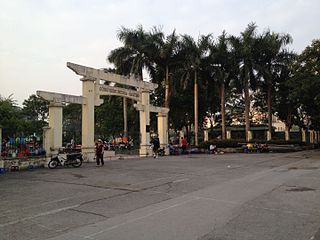
Indira Gandhi Park is a park in Hanoi. Indira Gandhi Park is named after India's first female prime minister. The old Indra Gandhi Park is located next to Hoan Kiem Lake before, now Ly Thai To Flower Garden.
26. Cua Bac Church
Cửa Bắc Church is a Roman Catholic church in Hanoi, Vietnam. Originally named as Church of Our Lady of the Martyrs, the church was built in 1932 by the French administration of Indochina as a part of the Hanoi's urban plan supervised by Ernest Hébrard. Today, Cửa Bắc Church is one of the three major churches of Hanoi, together with Hàm Long Church and Saint Joseph Cathedral. In November 2006, Cửa Bắc Church became the venue of a joint worship service of Vietnamese Catholics and Protestants with the participation of United States president George W. Bush, who was on an official visit to Vietnam.
27. Pen Tower
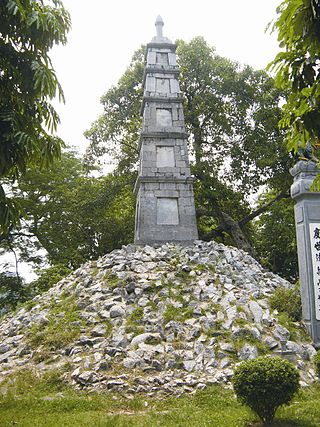
The Pen Tower in Ho Kiem Lake is a five-storey stone tower, built in the 18th year of Tu Duc (1865) on the foundation of the old Doc Ton mountain according to the idea of the vineyard Nguyen Van Sieu, located outside the entrance to The Huc Bridge, Ngoc Son Temple.
28. Chùa Hà
Ha Pagoda has the literal name Thanh Duc Tu, along with Tui Ha Communal House, established to form a cluster of relics of Dinh - Chua Ha Pagoda located on a piece of land, formerly belonging to Ha hamlet - Trung village - Dich Vong commune, Tu Liem district, now house number 86 Chua Ha street, Dich Vong ward, Cau Giay district, Hanoi city. Ha Pagoda along with Duyen Ninh Pagoda are 2 pagodas in the North.
29. Vietnam Fine Arts Museum
The Vietnam National Museum of Fine Arts is located in Hanoi, Vietnam. It is a museum showcasing Vietnam's fine arts from a range of historical periods. It is the country's primary art museum, the second being the smaller Ho Chi Minh City Museum of Fine Arts.
Wikipedia: Vietnam National Museum of Fine Arts (EN), Website
30. Hanoi Museum
The Museum of Hanoi is located in Nam Từ Liêm district of Hanoi, Vietnam. The museum displays artifacts from Hanoi's 1000-year history and the history, culture, heritage, and architecture of Vietnam. It showcases over 50,000 artifacts in a total area of nearly 54,000 square meters.
31. Ly Thai To Park
Chi Linh Flower Garden is another name for Ly Thai To Flower Garden, which is currently the place where the monument to King Ly Thai To - who publicly established Thang Long Citadel. The flower garden is located on Dinh Tien Hoang Street, Hoan Kiem District, in the center of Hanoi, Vietnam.
32. Presidential Palace Historical Site
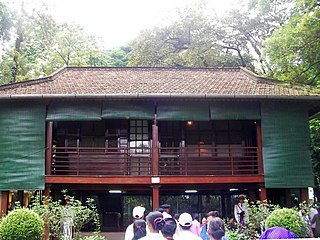
Presidential Palace Historical Site, which is located in Hanoi, Vietnam, is the place where Ho Chi Minh lived and worked during most of his time as leader of North Vietnam, from December 19, 1954 to September 2, 1969.
33. Cong Nhan (Workers) Theatre
Cong Nhan Theater is an architectural work at 42 Trang Tien, Hoan Kiem District, Hanoi, with the function of serving multi-purpose performances such as theater and movie screening. This is one of the oldest theaters in Vietnam.
34. National Museum of Vietnamese History
The Vietnam Museum of History, along with the Vietnam Revolution Museum, are two museums that have been merged into the National Museum of History, located in the city of Hanoi. The Vietnam History Museum (old) is a place to store artifacts, reflecting the cultures and history of building and preserving the country of the Vietnamese people from the beginning of enlightenment to the birth of the Democratic Republic of Vietnam. The museum has an Indochinese architectural style, located at No. 1 Trang Tien Street, Hoan Kiem, Hanoi. The museum is open to visitors all week, except Mondays. There are also many precious artifacts such as Dong Son bronze drums, Bat Trang pottery, Shiva statues, wooden stakes in the Battle of Bach Dang,...
35. Lenin Park
Lenin Park is a park named Lenin located opposite the Vietnam Military History Museum in Hanoi. It is located on Dien Bien Phu, Tran Phu and Hoang Dieu streets. The campus of the park is triangular, with a total area of 17,183 m², which includes the Lenin monumental architectural complex.
36. Hai Bà Trưng Temple
Hai Ba Trung Temple, also known as Dong Nhan Temple, is a temple dedicated to Hai Ba Trung located in Dong Nhan Ward, Hai Ba Trung District, Hanoi City. Currently, Hai Ba Trung Temple is located on the same campus as two other relics, Vien Minh Pagoda and Dong Nhan communal house, forming the Temple – Pagoda – Hai Ba Trung Communal House Cluster which was recognized by the Prime Minister as a special national monument on December 31, 2019.
Share
Disclaimer Please be aware of your surroundings and do not enter private property. We are not liable for any damages that occur during the tours.
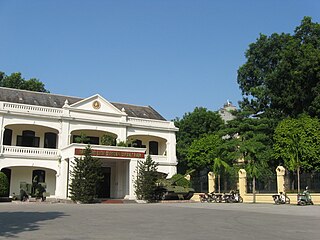
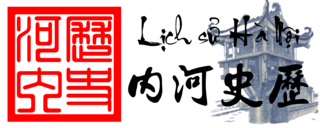

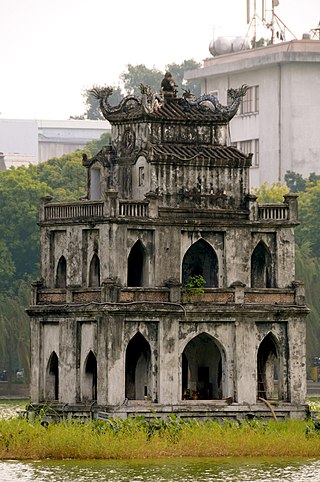
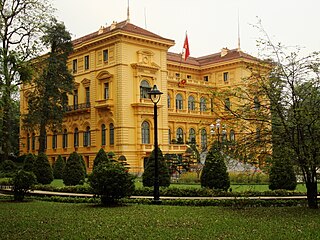
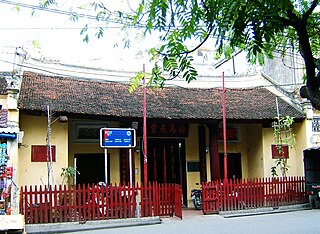
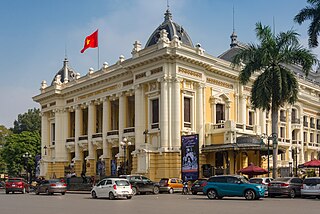
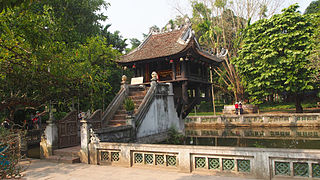
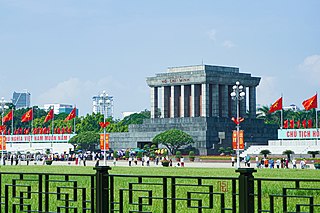
.jpg)
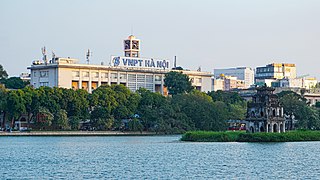
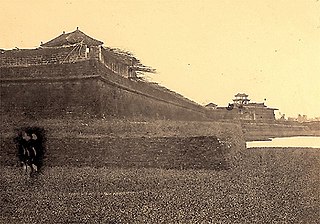
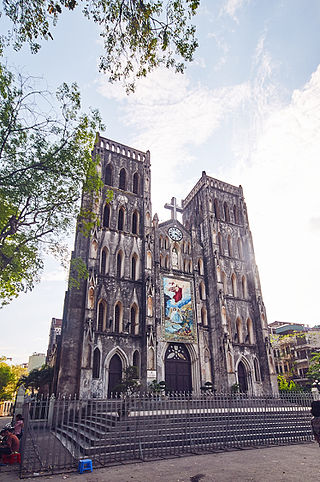
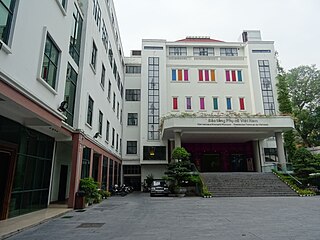
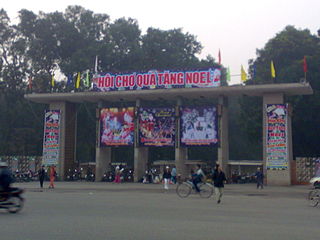
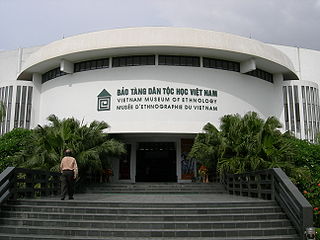
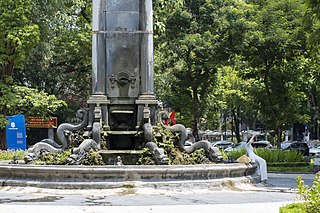
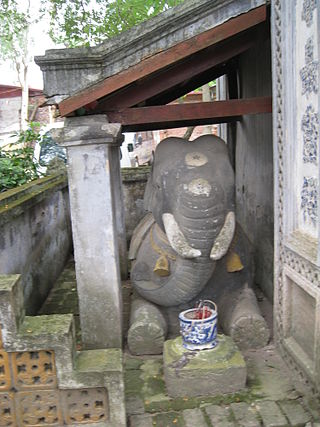
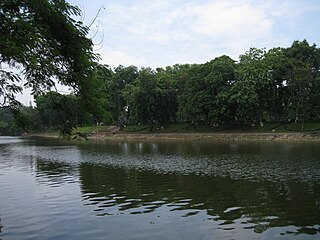
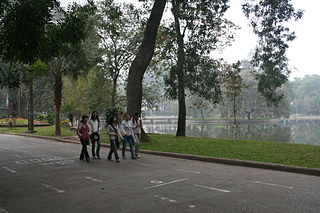
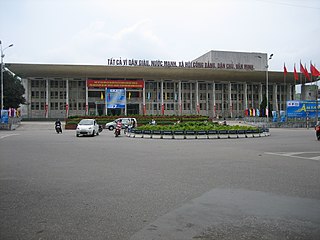

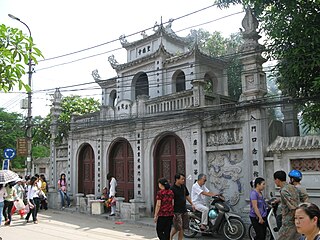
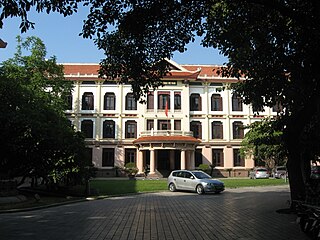


-Theatre.jpg)
